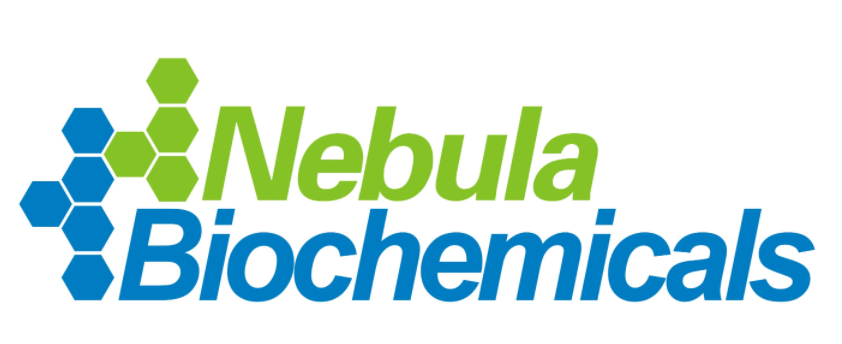

The synuclein family consists of three members—α, β, and γ—with α-synuclein being the most widely studied due to its role in Parkinson’s disease. However, γ-synuclein (γ-Syn) has emerged as a protein of growing interest in the context of neurodegenerative disorders and various cancers. Typically expressed at low levels in healthy nervous tissue, γ-Syn is significantly upregulated under pathological conditions such as neuronal injury and tumor progression. Recombinant γ-synuclein serves as a valuable tool in both basic and translational research to elucidate its molecular functions and explore therapeutic strategies.
▌Structural Characteristics of γ-Synuclein
γ-Synuclein is a 127-amino acid protein with a molecular weight of approximately 13.3 kDa. Structurally, it belongs to the class of intrinsically disordered proteins (IDPs), which lack stable secondary or tertiary structures under physiological conditions. This conformational flexibility makes γ-Syn prone to oligomerization and aggregation, a property implicated in both neurodegenerative pathology and tumorigenesis.
The N-terminal region contains repeated KTKEGV motifs that facilitate membrane interactions. The central hydrophobic domain plays a key role in self-assembly, while the acidic C-terminal tail is believed to mediate protein–protein interactions.
▌Recombinant Expression and Purification Strategies
Expression Systems
Recombinant γ-Syn is commonly produced in prokaryotic expression systems, particularly Escherichia coli strains like BL21(DE3), due to their efficiency, scalability, and low cost. For applications requiring post-translational modifications, eukaryotic systems such as HEK293 or CHO cells are more suitable.
Protein Purification
The recombinant construct typically includes a His-tag, enabling initial purification via Ni-NTA affinity chromatography. Subsequent steps may involve size-exclusion chromatography (SEC) or ion-exchange chromatography to improve purity. Due to its tendency to aggregate, low-temperature induction and the use of neutral buffer systems are recommended to maintain the monomeric form of the protein.
Protein Validation
Purified recombinant γ-Syn is typically characterized using SDS-PAGE, Western blot, and mass spectrometry (MS). Advanced structural analysis can be performed using circular dichroism (CD) spectroscopy or nuclear magnetic resonance (NMR) to examine its dynamic conformational properties.
▌Applications of Recombinant γ-Synuclein
Neurodegenerative Disease Research
Although α-synuclein is more directly linked to Parkinson’s disease (PD), γ-Syn has been implicated in Alzheimer’s disease (AD) and motor neuron diseases. Recombinant γ-Syn enables:
1)Investigation of its interactions with tau and β-amyloid proteins
2)Characterization of aggregation behavior and neuronal toxicity
3)Development of cellular and animal models for mechanistic studies
Cancer Biology
γ-Syn is markedly upregulated in several cancers, including breast, ovarian, and prostate carcinomas. Recombinant γ-Syn is utilized in:
1)In vitro studies of its role in cell migration and epithelial–mesenchymal transition (EMT)
2)Pathway analysis related to Akt, MAPK, and other signaling cascades
3)Binding assays with tumor-associated proteins such as HSPs and MHC molecules
Protein Interaction and Functional Studies
As an IDP, γ-Syn undergoes conformational changes that can be exploited to:
1)Establish drug screening models targeting protein aggregation
2)Generate and assess mutants (e.g., S129A, ΔC) to delineate functional domains
3)Map its interactome, including associations with 14-3-3 proteins, tubulin, and other cytoskeletal components
▌Future Perspectives
Recombinant γ-synuclein continues to gain traction as a versatile research reagent. Potential future directions include:
Mechanistic disease modeling: Enabling detailed studies on protein aggregation and misfolding mechanisms shared across neurodegenerative and oncologic processes
Synthetic biology applications: Use in engineering regulatory modules within IDP-based artificial networks or protein interaction pathways
▌References
1.Galvin, J. E. et al. (1999). Axon pathology in Parkinson’s disease and Lewy body dementia. PNAS, 96(23), 13450–13455.
2.Surgucheva, I. et al. (2006). Synucleins in cancer. J. Neurosci. Res., 84(6), 1250–1259.
3.Ninkina, N. et al. (2012). γ-Synucleinopathy: neurodegeneration associated with γ-synuclein overexpression. Neurotox Res., 22(3), 262–269.
4.Lavedan, C. (1998). The synuclein family. Genome Res., 8(9), 871–880.
5.Uversky, V. N. (2003). Conformational plasticity of α-synuclein. J. Biomol. Struct. Dyn., 21(2), 211–234.
6.Surguchov, A. (2008). γ-Synuclein: new solution of an old problem. Front. Biosci., 13, 491–505.
7.Bruening, W. et al. (2000). Synucleins in breast and ovarian cancer. Cancer Res., 60(2), 325–330.
8.Surguchov, A. et al. (2001). γ-Synuclein in glaucoma. Mol. Brain Res., 96(1–2), 120–132.
9.Li, J. et al. (2001). PD-related mutations alter α-synuclein fibrillation. Biochemistry, 40(38), 11604–11613.
10.Matsushima, H. et al. (2010). γ-Synuclein regulates olfaction via apoptosis. J. Neurosci., 30(3), 1023–1031.